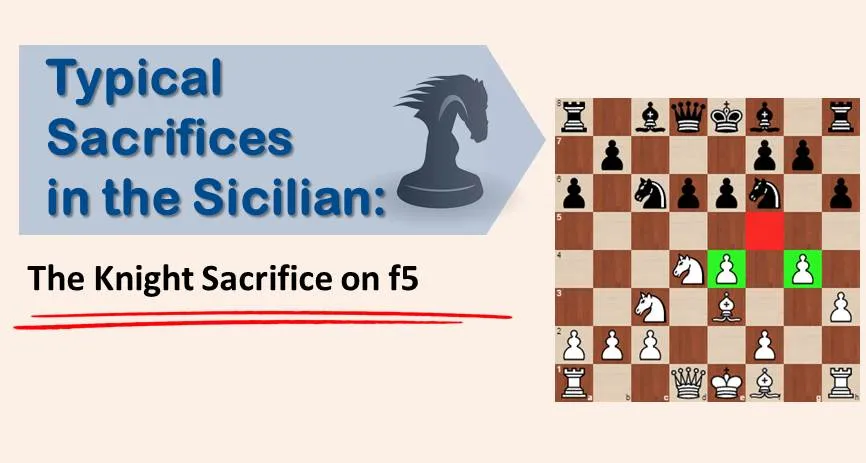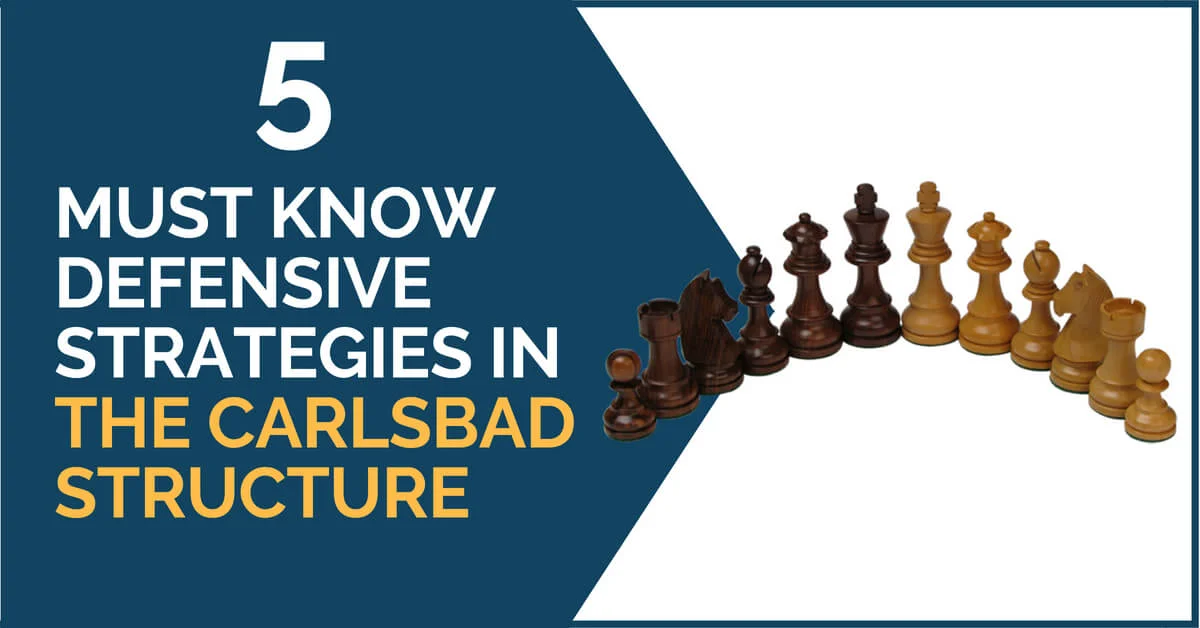Typical Sacrifices in the Sicilian: The Knight Sacrifice on f5

Continuing our series of typical sacrifices, today we are going to discuss another very important and usual idea in the Sicilian Defense. Much like its brother, the piece sacrifice on d5, giving up the knight on f5 has more or less the same ideas and outcomes.
The point is to ruin black’s pawn structure and open up the files in order to start an attack against the uncastled or, in this case, even castled king. The two sacrifices bear many similarities and, if you already know the main ideas of Nd5, you won’t find giving up the knight on f5 too difficult to execute either.
Let’s see, for starters, the differences between the two typical moves in the Sicilian:
- The first and most important one is that, in this case, the cases where you can get back the material almost immediately are very rare. This can happen mostly when the opponent’s king is still in the center and white’s attack will focus on the bishop on e7 which black won’t be able to protect enough times;
- Secondly, you will probably need to calculate a little more. This is due to the fact that, in case black takes the knight on f5, taking back with the pawn won’t gain a tempo – which happened before when an enemy piece was placed on c6;
- The piece sacrifice on f5 is usually executed after white has already expanded his kingside pawns. This means that, if Nd5 could only open the E file, now you will have the option of capturing with the g4 pawn as well. This will open the G file for the rook and white will be able to push his central pawns in order to create more threats. We have seen that Nd5 usually worked when the enemy king was in the center and its idea was to keep it from getting into safety. When sacrificing on f5, this is no longer the case. Thanks to the idea mentioned before, white can use the G file to create a strong attack against the king;
- Another idea of this sacrifice is to open up the a2-g8 diagonal for the light squares bishop;
- Once the d5 square is no longer controlled by black, white can make good use of it by planting his other knight there and limiting black’s activity.
Tip
If you want to improve your positional chess and start converting more middlegames into wins, you should give a try to our training course which covers most important middlegame positions in a step-by-step easy to follow and understand way.
Now that we have mentioned the usual ideas that you can when sacrificing the knight on f5 in the Sicilian, let’s take a look at a few Grandmasters games.
The first one was played between the Cuban Grandmaster Bruzon Batista and the Romanian (now playing for Spain) veteran Suba. In the Sicilian Scheveningen, white chose the very aggressive plan with 6. g4 and castled long quickly, while black’s king remained in the center. As we mentioned before, the presence of the e4 and g4 pawns, both controlling f5, is a great indicator of a possible knight sacrifice on this square. See how white continued his attack in the game below:
In the next game, we will see the sacrifice against the uncastled king, when accepting the knight on f5 would open up the light squares bishop and completely damage the king’s safety. In the game, black didn’t capture the piece back and the white won thank to the dominance on the dark squares.
The last game is another win by Rublevsky in the same variation, only this time black chose to castle. With his Queen on g3, he started putting pressure on g7 and opening the rook on e1 and the diagonal for the bishop on b3 proved to be decisive.
If you want to improve your chess level, you need to have a clear study plan. If you aim for a dramatic improvement at chess you need to work on all of the elements of the game in a systematic way:
- tactics
- positional play
- attacking skills
- endgame technique
- classical games analysis
- psychological preparation
- and much more
That seems to be like a lot of things, and that is. But no worries, we have made it easy for you. Our comprehensive training course covers it all and much more. Sign up for 21 Day Training right now!










Comments: